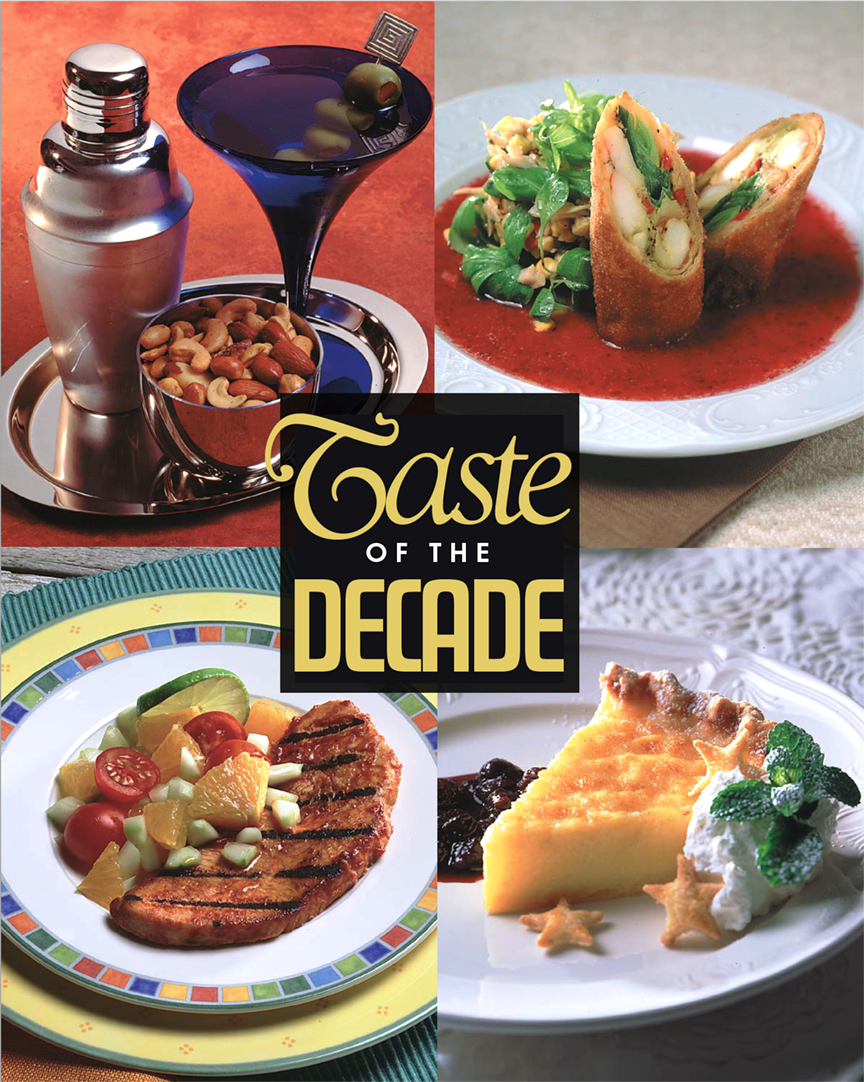The decade AURAS participated in these events coincided with a revolution in the design and publishing business—the advent of desktop publishing. AURAS was an early adopter of digital design and production. From the start, we tried to save everything we did, even though archiving was expensive.
First, we stored projects on the then-latest digital storage—44 MB SyQuest drives. Later, we transferred all the files to still-expensive 120 MB optical discs. Finally, we burned all those projects onto the more reliable, much less expensive 650 MB CD-ROM disks. There they sat for 15 years in notebooks, ready to be rediscovered.
A few years ago, we gathered the Taste files off all those old CDs and were delighted—amazed, actually—to discover that almost all the files were readable. Our pack-rat mentality paid off. Design programs, fonts, and computers had changed, but we could still use them. It was also quite a shock to realize how far digital publishing—and our skills—has progressed in sophistication as we opened 30-year-old documents. Now, the book is available for anyone to download, and print copies will be available soon.
Assembling the hundreds of recipes proved to be the easy part, culling duplicate dishes offered multiple years. Editing them was a more arduous task. It would be nice to think that we just opened the documents, copied the content, and plopped it into the book. It was not that simple. Each year we printed what the chefs provided. Over a decade, the recipes varied wildly in the ingredient listings, servings, measuring units, and instruction style.
We rewrote Instructions for better clarity and uniform style. I admit to requiring educated guesses in a few spots. We reduced restaurant-sized portions (one called for 120 servings!) into portions for an average dinner party. The measurements are standardized. We’ve changed restaurant lingo when needed—not all home cooks know what a robot coupe is, but they do know what a food processor does.
I was struck by how approachable most of the recipes are today. Most of the dishes are well within the skills and equipment of a practiced home cook. Some ingredients might be a challenge to procure. Fresh snails, rabbits—and especially sugar toads—are all proteins that could be hard to find. Salads that use Maché or Treviso might need butter lettuce or radicchio instead.
There are some gems in here, as well as signature dishes from bygone restaurants. Taste includes four crab cake recipes, and each has its merits. The version from The Palm is still on the menu today. The same is true of the Peanut Butter Crunch Bar from Michel Richard’s Citronelle—still a popular dessert at the late chef’s Central. Many fans of the Tiramisu from Maggianio’s will be happy to find that seldom-published recipe here.
The book is arranged chronologically by each Taste year, showing the art and theme AURAS created for each event. Talented illustrators and photographers such as Liz Wolf, Michael Crampton, and Reneé Comet lent their skills, as did our in-house designers who developed themes, branding, and art: Sharri Wolfgang, Vivian Moritz, and Ron Melé.
We have made Taste user-friendly. The TOC allows you to click on any recipe and go right to it. Links back to the TOC are on every spread. The recipes are color-coded by course and arranged alphabetically and by course in the Table of Contents. If you try a recipe, let us know how it turned out.
